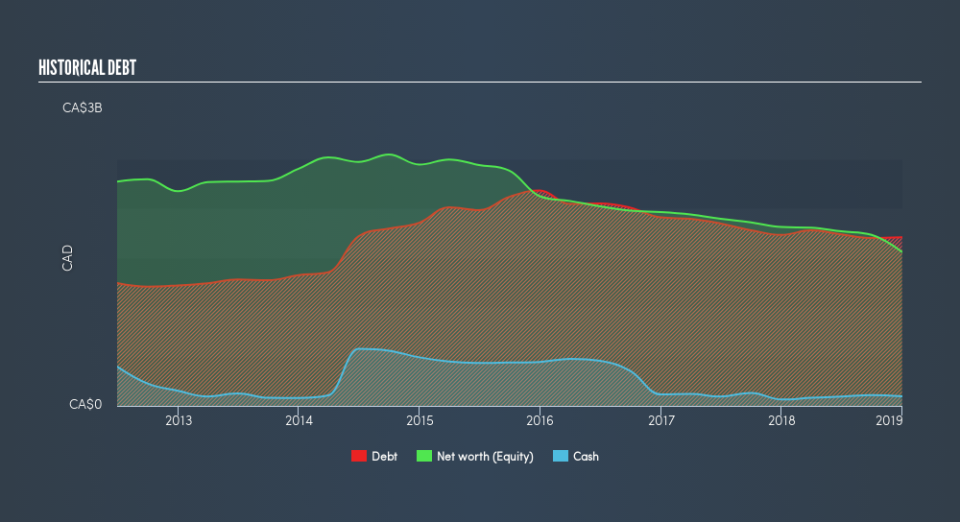Are Precision Drilling Corporation's (TSE:PD) Interest Costs Too High?

While small-cap stocks, such as Precision Drilling Corporation (TSE:PD) with its market cap of CA$1.1b, are popular for their explosive growth, investors should also be aware of their balance sheet to judge whether the company can survive a downturn. Since PD is loss-making right now, it’s crucial to understand the current state of its operations and pathway to profitability. We'll look at some basic checks that can form a snapshot the company’s financial strength. Nevertheless, potential investors would need to take a closer look, and I’d encourage you to dig deeper yourself into PD here.
PD’s Debt (And Cash Flows)
PD's debt level has been constant at around CA$1.7b over the previous year – this includes long-term debt. At this constant level of debt, PD currently has CA$97m remaining in cash and short-term investments to keep the business going. On top of this, PD has generated cash from operations of CA$293m during the same period of time, resulting in an operating cash to total debt ratio of 17%, indicating that PD’s current level of operating cash is not high enough to cover debt.
Can PD meet its short-term obligations with the cash in hand?
At the current liabilities level of CA$282m, it appears that the company has been able to meet these obligations given the level of current assets of CA$523m, with a current ratio of 1.85x. The current ratio is the number you get when you divide current assets by current liabilities. For Energy Services companies, this ratio is within a sensible range as there's enough of a cash buffer without holding too much capital in low return investments.
Does PD face the risk of succumbing to its debt-load?
PD is a highly-leveraged company with debt exceeding equity by over 100%. This is a bit unusual for a small-cap stock, since they generally have a harder time borrowing than large more established companies. But since PD is currently unprofitable, there’s a question of sustainability of its current operations. Running high debt, while not yet making money, can be risky in unexpected downturns as liquidity may dry up, making it hard to operate.
Next Steps:
PD’s high cash coverage means that, although its debt levels are high, the company is able to utilise its borrowings efficiently in order to generate cash flow. This may mean this is an optimal capital structure for the business, given that it is also meeting its short-term commitment. Keep in mind I haven't considered other factors such as how PD has been performing in the past. I recommend you continue to research Precision Drilling to get a more holistic view of the small-cap by looking at:
Future Outlook: What are well-informed industry analysts predicting for PD’s future growth? Take a look at our free research report of analyst consensus for PD’s outlook.
Valuation: What is PD worth today? Is the stock undervalued, even when its growth outlook is factored into its intrinsic value? The intrinsic value infographic in our free research report helps visualize whether PD is currently mispriced by the market.
Other High-Performing Stocks: Are there other stocks that provide better prospects with proven track records? Explore our free list of these great stocks here.
We aim to bring you long-term focused research analysis driven by fundamental data. Note that our analysis may not factor in the latest price-sensitive company announcements or qualitative material.
If you spot an error that warrants correction, please contact the editor at editorial-team@simplywallst.com. This article by Simply Wall St is general in nature. It does not constitute a recommendation to buy or sell any stock, and does not take account of your objectives, or your financial situation. Simply Wall St has no position in the stocks mentioned. Thank you for reading.


